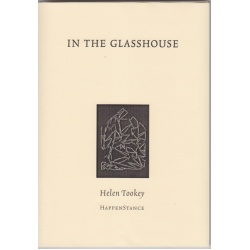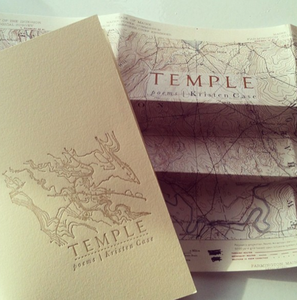In the Glasshouse by Helen Tookey
– Reviewed by Jessica Traynor –
Helen Tookey writes poems of mutability, poems that seek to capture the moment when one form becomes another. In the Glasshouse seeks to isolate the second when things change; that rupture in reality that is so often lost or overlooked. In the opening poem, ‘Glasshouse’, this searching is characterized by the striking image of broken glass paused in mid air: ‘and the glass will hang always in its perfect instant / complete still but fractured utterly.’
Tookey’s poems recognize that we live in a state of full or partial fracture. This mutable, fragmented self is not mourned, but celebrated in poems that revel in the strangeness of things. ‘Prairie’ introduces girls who know they are girls, but also horses; they mutate in order to explore the breadth of the world around them:
Sometimes we are girls, and sometimes horses.
When we’re horses, we can gallop, but there aren’t so many stories.
When we’re girls, we wear calico dresses and never any shoes.
‘Jitties’ is a celebration of liminal spaces; the kind of secret, unmarked shortcuts and tracks that the girls in ‘Prairie’ might travel to transform from girls to horses and back again. Here is a good example of Tookey’s interest in form, the unpunctuated prose poem allowing the reader to share the clandestine rush of slipping along these secret ways:
______________________________________….you have
always wanted this to move unseen to cut passages able
to slip through the cracks like the streams along the field
edge the housebacks the narrowways the creosote fences…
The poet’s desire for a glimpse of something beyond the mundane continues in ‘Rheidol Valley’, with its epigraph from Rilke’s ‘Orpheus. Euridike. Hermes’ and its repeated first and last lines ‘If you put out your hand and the earth/ were to take it,’ creates an irresistible sense of yearning, the lack of a conclusion only reinforcing the possibility awakened by the poem.
There are moments where vision is denied the poet too, where the veil refuses to lift, and this is treated with wry humour in ‘Heptonstall’, in which a constant mist renders talk about the splendours of the region meaningless:
They are always speaking of beauty in this valley
but what of this staring into fog, this constant senseless
falling of water?
The hill presses like a baffle on the mind
And the rock walls weep, six inches past the kitchen window.
In ‘Rain Script’, too, the poet’s formal invention shows us a fractured vision, the poem’s placement on the page emulating the fall of raindrops on a windowpane. A forest is suggested, a conversation with an other, and a secret buried. Fragments such as ‘as though I could’, ‘never happen’, and the poem’s final words, ‘buried it’, suggest a redacted telling of a loss, or a connection broken. Sometimes the spaces between are the site of loss, as well as becoming.
In the Glasshouse expands on themes explored in Tookey’s first collection, Missel-Child, while demonstrating an evolving formal experiment and an awareness of the fertile ground between the real and the imagined. I look forward to seeing how these themes inform her next full collection.




